Growing up, a staple accessory on my family’s coffee table was a large piece of cut glass with a pattern of flowers and stars that seemed far too pretty for its purpose: holding my parents’ cigarette ashes and cigarette butts.
At the time, my parents were heavy smokers, and at least one ashtray was in several rooms in our home, as well as the garage and basement, including souvenir ones that my paternal grandparents brought back from yearly trips to Las Vegas.
After my parents quit smoking cold turkey for good, I don’t remember what happened to the other ashtrays, but that pretty cut glass one remained on the coffee table for years, repurposed as a candy dish.
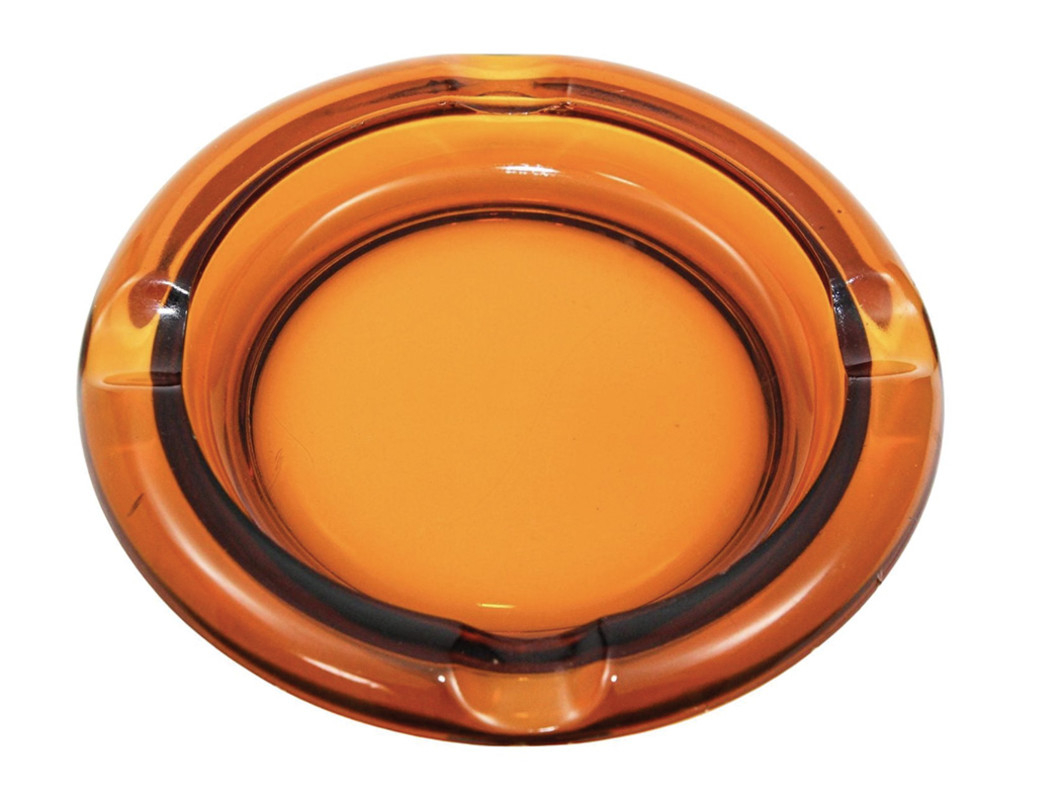
1stDibs
Collectors have appreciated ashtrays and their distinctive place in design history for decades. But ashtrays have ignited in popularity over the past few years as more people are coveting them as cool and nostalgic collectibles.
They’ve Come a Long Way, Baby
Since the 16th century, cigarettes, cigars, and other tobacco products have experienced their share of popularity, controversy, bans, repeals, and frequent scorn, becoming unacceptable and unwelcome in homes and public establishments. But the ashtray remains an iconic object even after the smoke has cleared.
Rudimentary forms of ashtrays existed before their first big heyday in the 19th century, but it was during this time that their popularity skyrocketed, especially as more women began smoking. To accommodate female smokers, ashtrays became more fashionable and ornate art forms, depicting colorful landscapes, floral arrangements and pastoral scenes.
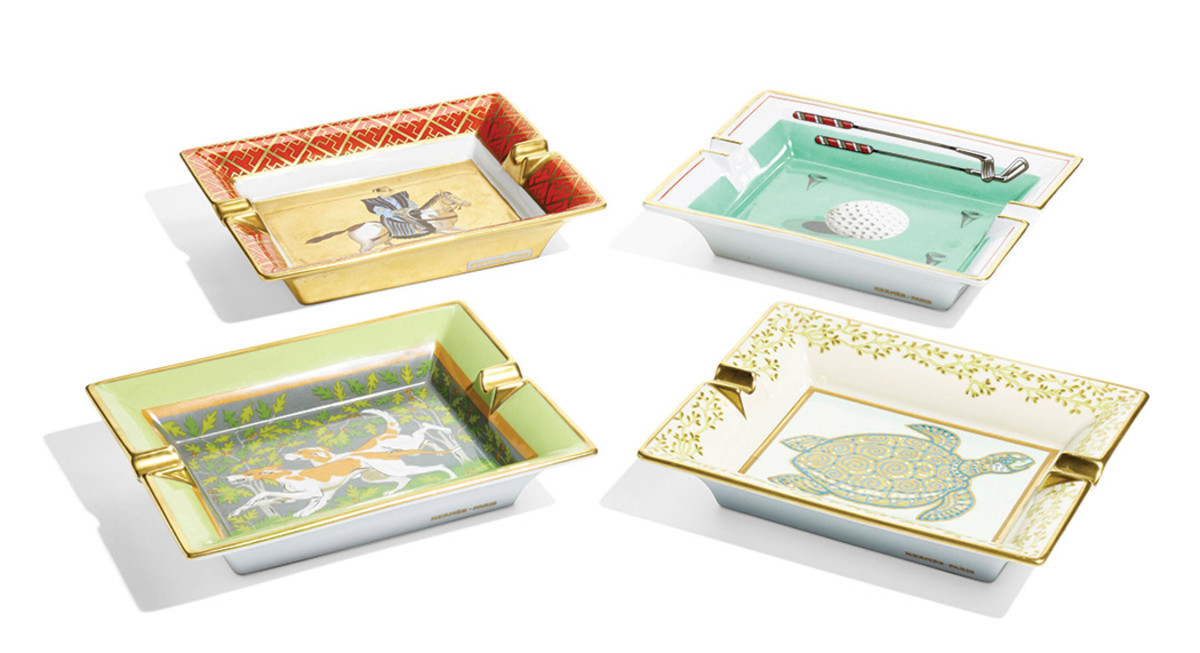
Wright Auction
As ashtrays became more common, they began reflecting the style trends of the decades they were produced:
THE 1920s: Hollywood glamour and the emergence of luxury travel on ocean liners and trains produced Art Deco’s simple geometric shapes. The stylish, sleek lines of ashtrays from this period reflect a time when smoking culture was the cat’s meow.
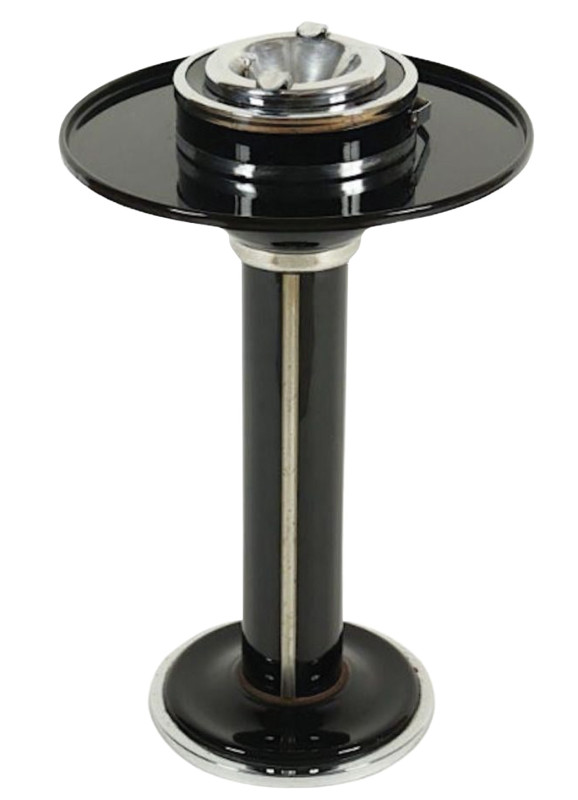
1stDibs
THE 1930s: During the Great Depression, glass manufacturers, including Federal Glass, Hocking Glass, and MacBeth-Evans, mass-produced attractive and affordable Depression glass pieces that were popular because they provided some colorful glitz during otherwise hard times.
THE 1940s: Lucite, an acrylic also born during the Great Depression, was a popular material for decorating during this decade. Lucite ashtrays were often embedded with glitter, rhinestones, seashells, and coins.

THE 1950s & ’60s: These decades were the golden age of smoking when nearly half of the population in the U.S. regularly lit up, spawning some of the most sought-after ashtray designs. After World War II, whimsical styles and colorful, abstract patterns reflected the country’s optimism in the ’50s, and bright, pop-culture imagery and Tiki style ruled, including the humorous head-shaped open-mouthed ashtrays in homes across the U.S. In the ’60s, pop culture reflected a new wave of unconstrained attitudes and open-mindedness, producing groovy, free-form designs and psychedelic colors.
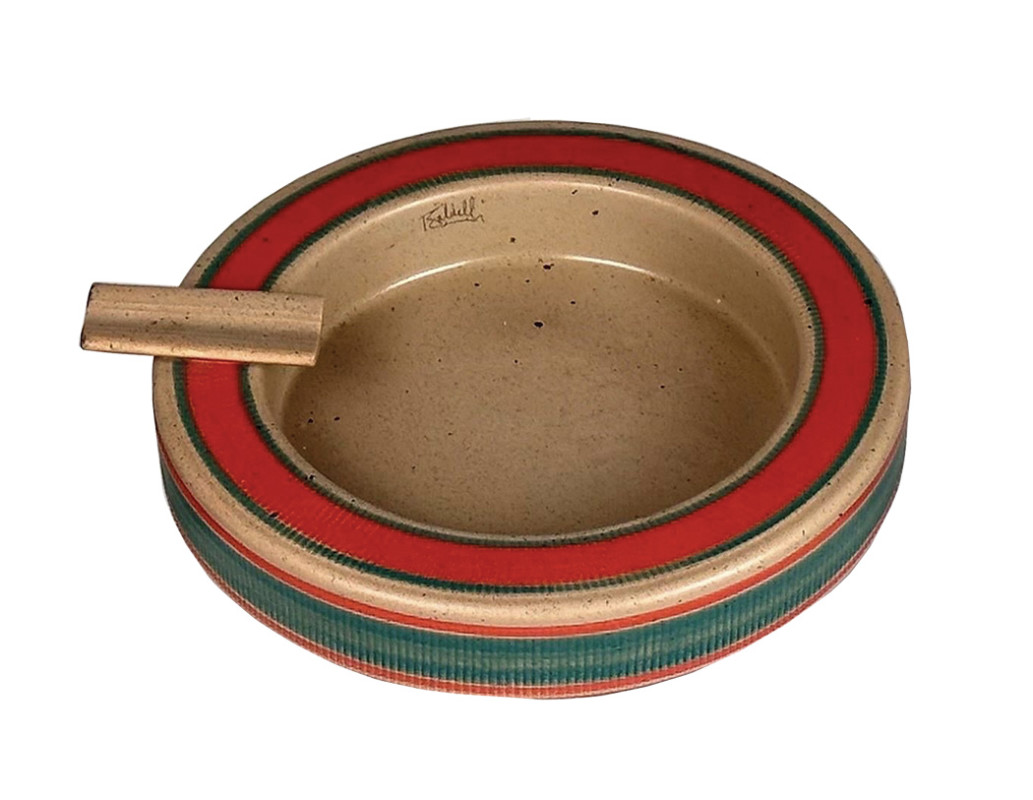
Adding Panache to Spaces
Today’s growing collecting fanbase includes lovers of the Mid-Century Modern era’s many high-quality ceramic and glass ashtrays and vintage shoppers wanting to add affordable design history, nostalgia, and personality to their homes—and find a valuable prize. In 2022, legions were scouring second-hand shops after a college student bought a “Too Young to Die” ashtray by Japanese artist Yoshitomo Nara for $10 at Goodwill and flipped it on eBay for $2,860. These ashtrays from 2002 continue to sell between $500 to $2,500.
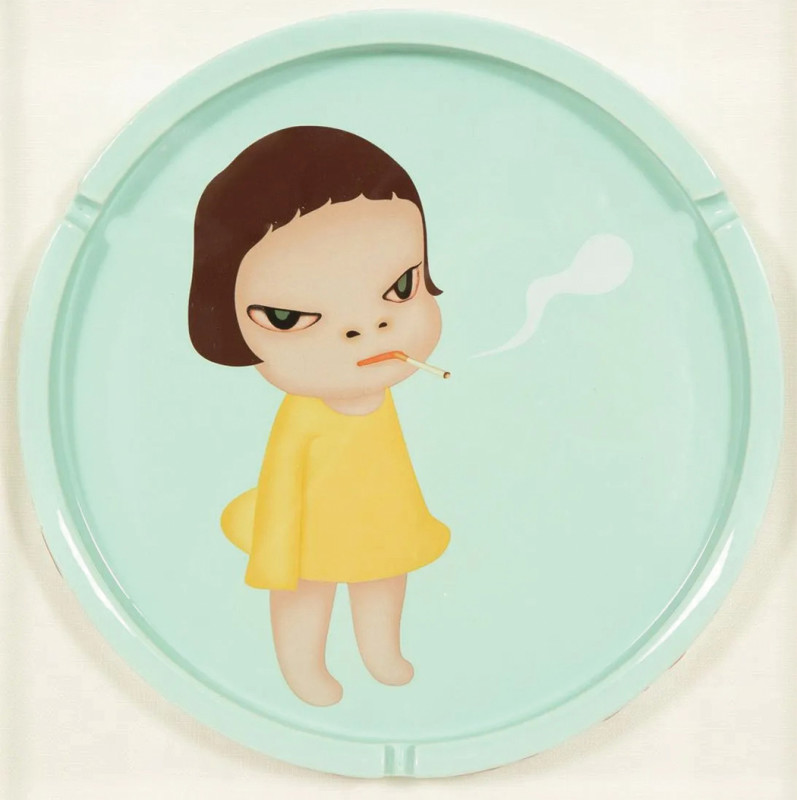
Freeman/Hindman
Vintage ashtrays are decor pieces that bring something distinctive and unique to a room and contribute to its vibe. They also fit well with this year’s “eclectic grandpa” trend in design and fashion.
Many ashtrays can be found at thrift stores and yard sales for less than $10, while deluxe floor models and extravagant examples made by famous companies like Tiffany and Wiener Werkstätte are offered at 1stDibs, Charish, and other e-commerce sites for tens of thousands of dollars.
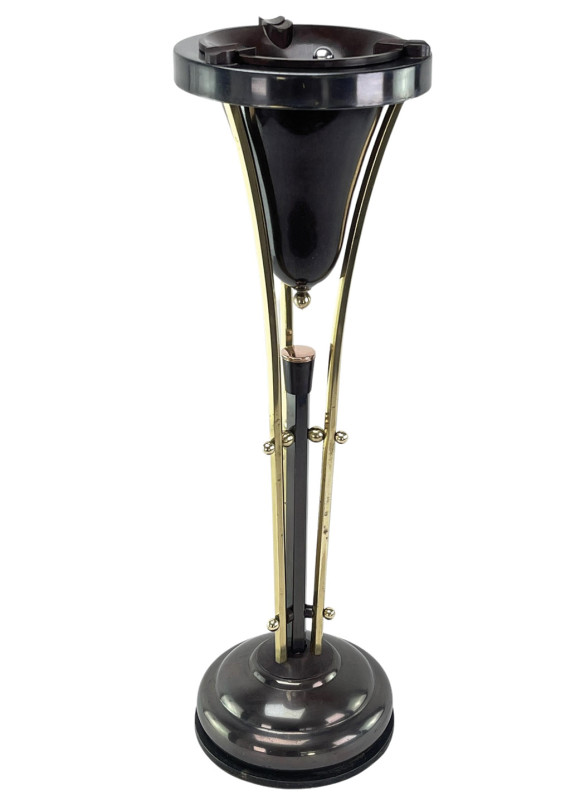
1stDibs
Though fewer people smoke cigarettes these days, the legalization of marijuana use in more states still creates a practical need for ashtrays, but the majority are used as decorative pieces rather than for catching ashes. Collectors use them as candle holders, receptacles for candy, keys and loose change, put them on nightstands to corral jewelry or other trinkets, and on bathroom counters to hold soap or other toiletries. They can also serve cocktail onions and olives for martinis, as well as dips and spreads. Large agate and stone ashtrays from the 1950s and 1960s can be repurposed as soap dishes and wine coasters.
Popularly Collected and Valuable
Designers have left behind an overwhelming array of vintage ashtrays to choose from in different colors, shapes and sizes. There are Depression glass models in a rainbow of hues; hefty Bohemian cut-crystal ashtrays that add a dash of Hollywood Regency to a space; beautiful hand-painted Noritake ashtrays; dainty vanity ashtrays from the 1920s that women used when they smoked while getting ready for a night out; Homer Laughlin’s Amberstone and Fiesta ashtrays with the company’s trademark concentric rings; gorgeous art glass ashtrays in rich jewel tones; chic and elegant Hermès ashtrays adorned with images of horses, hunting dogs, and sailboats; folksy models made in animal shapes by Red Wing and Rookwood; high-end gold and silver examples; brass, bronze, and copper models; fanciful Brush-McCoy ceramic ashtrays, including pot-bellied examples flanked by a pair of open-mouthed frogs that held fresh cigarettes; candy-colored handblown glass pieces by Murano; all kinds of Mid-Century models, like aqua and pink ceramic atomic boomerangs, some of which are on little stands; stackable pastel melamine ashtrays; and souvenir ashtrays from casinos, hotels, and nightclubs, along with ones that advertise beer and liquor brands. There are also tall metal smoking stands, some of which include a table or magazine rack.
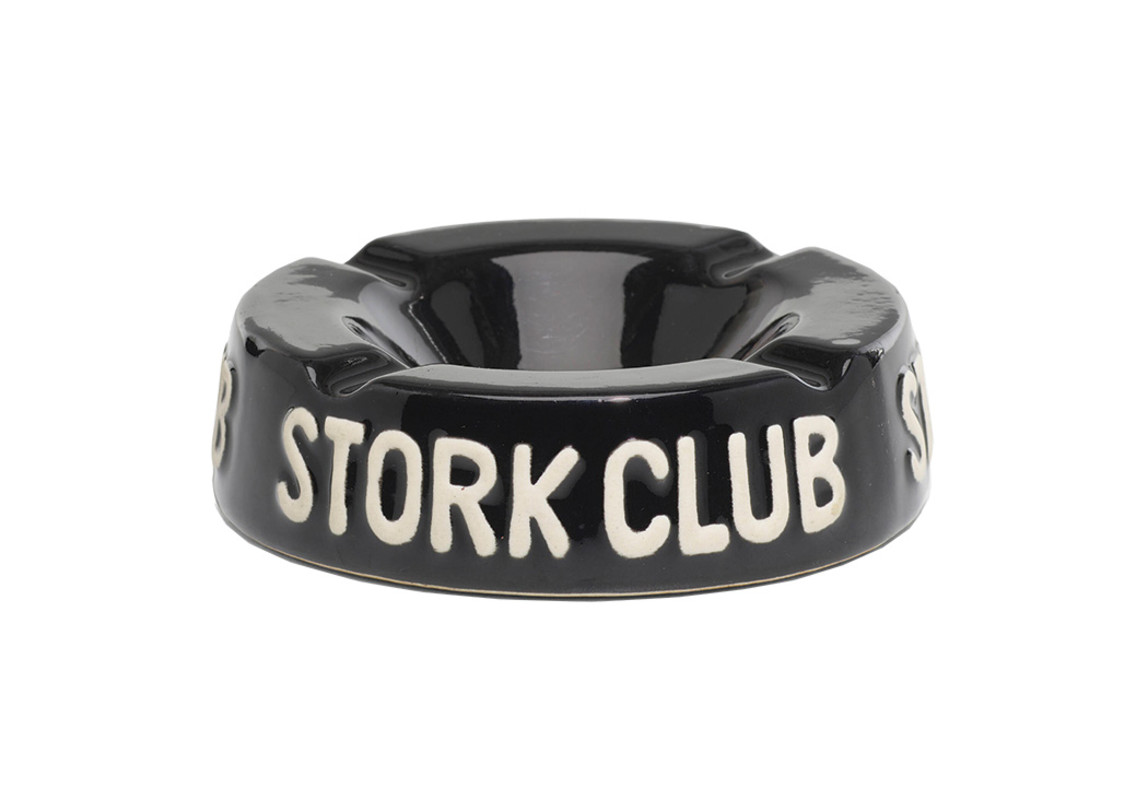
Wright Auction
And that is just the tip of the iceberg. Whether you smoke or not, vintage ashtrays are appealing collectibles. Their small size makes them easy to acquire and display in large numbers without taking up too much space. Snapshots of their culture, ashtrays were made during some of the most creative eras in history, so if you’re a fan of the Victorian, Arts and Crafts, or counterculture era, you’re sure to find one that fits your taste and aesthetic.
No longer seen as mere utilitarian pieces with the sole purpose of holding odious cigarette butts, ashtrays have become rightly appreciated as decorative art.
You may also like:
Learn about old furniture forms that have fallen out of use
The Metamorphosis of Antique Tobacco Pipes









